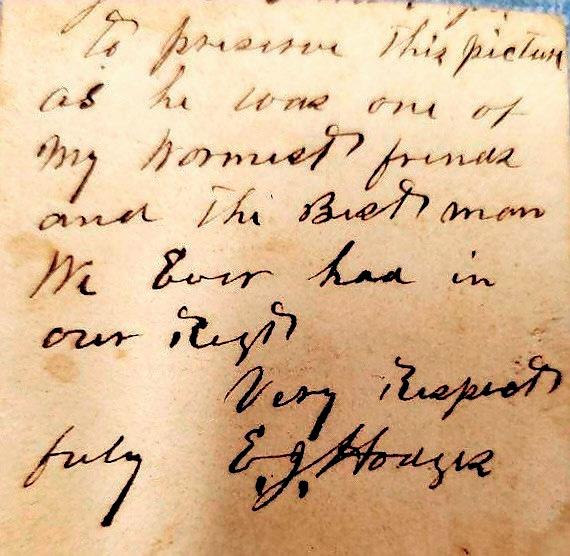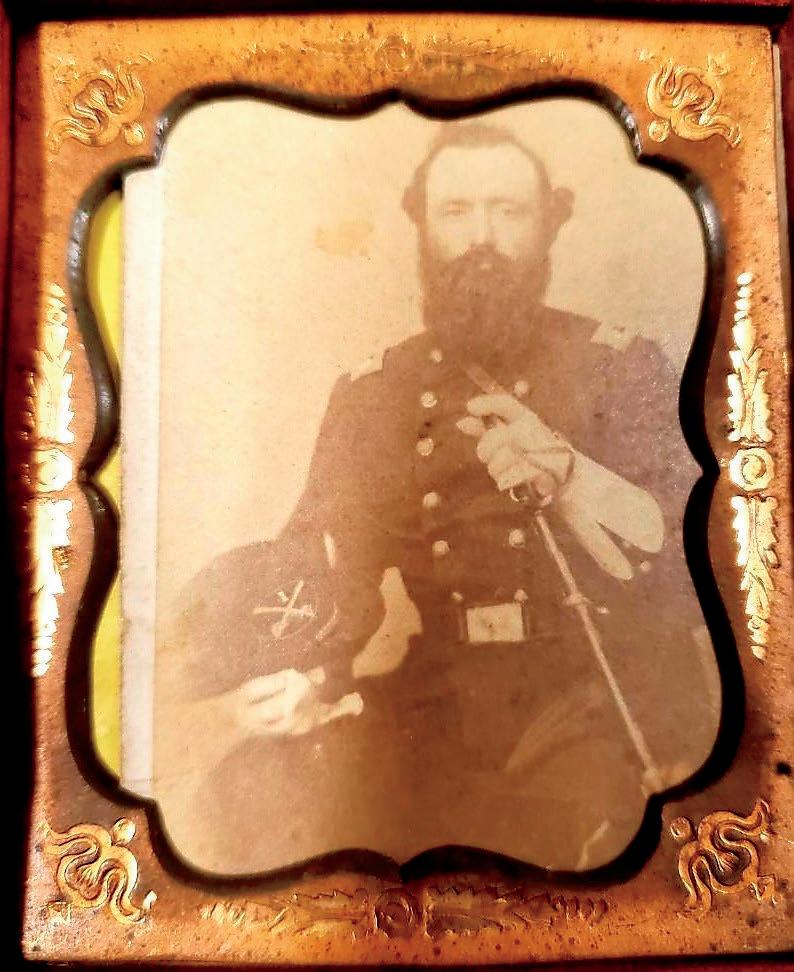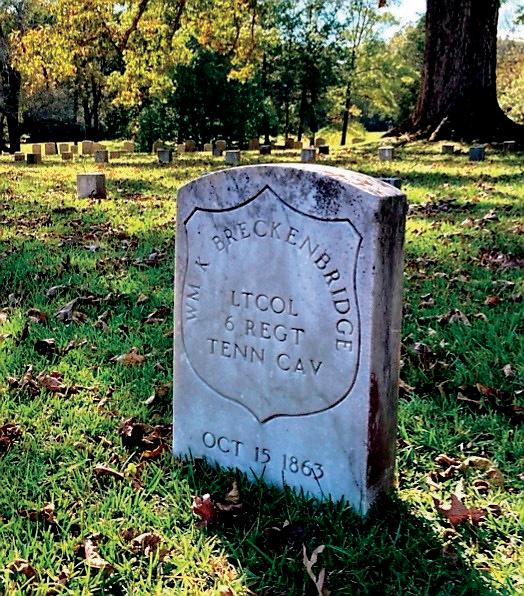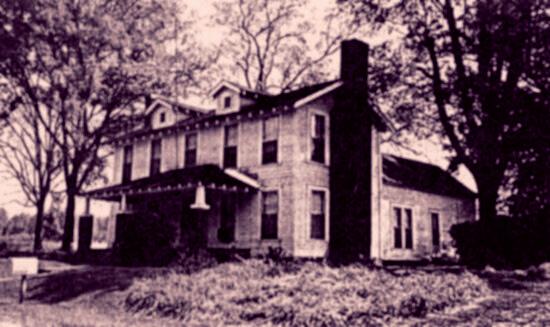
7 minute read
IN THE SHADOW OF THE DEVIL NO MORE

In the Shadow of the Devil No More
Advertisement
The Leadership of Lt. Colonel William K.M. Breckenridge
John Talbott
The night was quiet along the Tennessee River as the mounted Union officer stood staring at the waiting gunboats He looked behind him at the fifty-five mounted men he was about to lead across the river. They were good men and above the criticism lately leveled at them because of his own commanding officer. In fact, this officer about to lead these men on a daring raid on the Perry County, Tennessee courthouse, Lt Colonel William K M Breckenridge, had little use for his own commander, also their commander, Colonel Fielding Hurst Only two months prior, in late March 1863, Hurst had arrested him and for no other reason than he felt threatened by a more seasoned and principled officer Breckenridge tried diligently to be just that.
Now, here he was, once again leading troops in the field while Hurst’s whereabouts could only be conjecture Maybe he was raiding plantations, sleeping in his featherbed at his own home back in Purdy or just scouting for his next ill-gotten gain He had his reasons for entering this damnable war and Breckenridge had his own Breckenridge was a professional soldier and his cause was the Union cause, that and that alone. Hurst and his cronies had spent most of the last year stealing horses, raiding farms and houses and enriching themselves Breckenridge had spent most of the last year building the United States First West Tennessee Cavalry into a functioning and legitimate military regiment
Now, he prepared to lead his men again in the pursuit of weakening the Confederate cause in the area of the Tennessee River. From August to September 1862, Breckenridge had traveled from West Tennessee to Washington, D.C., St. Louis, Missouri, Columbus, Kentucky and various places in between, in his efforts to outfit, equip and raise the regiment While he worked to build the unit, Hurst was busy getting himself arrested for burning the houses of local citizens The men of the new unit respected Breckenridge and expressed extreme frustration at the behaviors of Hurst and his cronies The unit’s senior professional soldier, Breckenridge was forced to spend time and energy on more than one occasion attempting to convince the enlisted men to remain in the ranks and not to desert the regiment
Breckenridge’s story almost wasn’t told. He kept a record of his wartime activities, correspondence and observations in his journal, but that journal disappeared into private hands after his death in October 1863 It didn’t see the light of day again until 2012, some 149 years later. During that nearly 150year period, the story of the United States First West Tennessee Cavalry, later known as the U S Sixth Tennessee Cavalry, was told from the perspective of Fielding Hurst, his proponents and his detractors. Still missing all those years was the voice of William K.M. Breckenridge, the dedicated Union officer who, for all practical purposes, actually built and led the regiment in its first year
Death enshrouded Breckenridge in the shadow of Fielding Hurst. Little attention was paid to him and credit for raising the regiment was largely given to the wrong man Through his journal, we learn of spies watching Rebel troops moving along the Tennessee River through a spyglass, of widespread looting and burning on the commands of both Hurst and fellow officer William Jay Smith as well as the privation of the common soldier in the regiment while Hurst and Smith lived well and prospered through ill-gotten gain. We also learn that it was Breckenridge who spent his energies and health trying to procure for the men both their pay and their needed equipment and arms
Still more importantly, the story of Breckenridge allows us a look at the home front in Civil War-torn West Tennessee and McNairy County The Civil War in this region is not confined to the Battle of Shiloh, Corinth, or Davis Bridge alone The American Civil War visited the thresholds and front yards of homes all over McNairy County and West Tennessee on a daily basis in some small or large way Whether it was the wholesale looting of homes and farms by both Union and Confederate irregulars and regular troops or the confiscation of a single horse or mule or the impounding of a crop, the average citizen felt the war daily.
Mothers worried about their sons being conscripted into the service of an army whose cause they did not espouse In fact, women played a crucial role in West Tennessee during that era. Little researched until recently, women such as McNairy Countians Nancy Webster and Mary Swain showed remarkable bravery and resilience as they spirited their sons away to safety in Union territory to avoid Confederate conscription, defended their property and farms from arson and theft and fed and cared for wounded soldiers
As the story of Breckenridge unfolds, we also learn that some of what we’ve been told over the decades about his regiment and Fielding Hurst may not have been true after all. Research often dispels myth and strengthens the understanding of true facts There are no alternative facts in history It is always a quest for the truth, no matter how unpleasant it may be. The search to discover Breckenridge the soldier and man also yielded important discoveries about exaggerated and nonexistent events
For years, McNairy Countians have been taught about the alleged mass murder of Confederate troops by the United States First West Tennessee Cavalry along the PocahontasPurdy Road However, no one ever actually bothered to verify the veracity of such claims and no professional historian ever bothered to visit the subject However, once challenged in light of the journal of Breckenridge and his failure to mention such an event, while enumerating regularly the crimes of Fielding Hurst otherwise, the allegations fell by the wayside In fact, three of the alleged victims of July 1863, survived by years. Research also dispelled many aspects of the story, both in its original form and its exaggerated form. Careful research and detailed records render that long-revered story to be just that, a story but not history
Unfortunately for the First West Tennessee Cavalry, the hard work and diligence with which Breckenridge fulfilled his duty also weakened him He remained actively engaged in the daily leadership of the unit and on the front lines whenever the men were also However, the work was taking its toll In October 1863 in Grand Junction, Tennessee, too weak to get out of bed, Breckenridge died and passed into history He was first interred in Saltillo and later moved to Shiloh National Cemetery, where he buried in a place of honor overlooking the Tennessee River.

To this day, Breckenridge remains the highest-ranking military officer buried in Shiloh National Cemetery
McNairy County’s Civil War history is richer for the diligence of William K M Breckenridge in keeping a journal and documenting the events around him We are richer for its emergence from the shadows of history More importantly, we are more accurately informed now of a man who deserved greatly to emerge from the shadows of Fielding Hurst to take his own place in the history of the American Civil War. To learn more about Breckenridge and this first new voice to emerge from America’s Civil War in decades, you can read In the Shadow of the Devil: William K M Breckenridge in Fielding Hurst’s First West Tennessee U S Cavalry, available in most online book retailers including Amazon, Books-A-Million, Barnes & Noble, Wal-Mart and many more.





